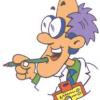Hello all and good day!
I am currently pursuing my Chemical Engineering Degree and have come across a design problem that I could not solve.
I have attached the PFD of the given question:

Solvent is DEA (Diethanolamine)
LINK: http://i.imgur.com/7ULuJwY.jpg
The item that I am tasked to design is T-402 (Solvent Regeneration Tower), and the information that I am given are as follows:
Temperature, pressure, vapor fraction, composition and flowrate of stream 21, 26, 29 (related to T-402)
I tried designing with Aspen HYSYS distillation component, but I could not come to a satisfactory conclusion where I can justify my selections. I could set my parameters as I like (reflux, pressure of condenser and reboiler, etc) and still be able to solve using HYSYS. The HYSYS file is attached below as .zip
My question for the HYSYS simulation is, are there any ways to justify my selection of parameters? I feel like I am missing a very important thing, but I'm not too sure what.
------------
As far as hand calculations go, I have made an excel sheet to calculate mol fraction, vapor pressure from perry's handbook, then I'm not too sure if I'm doing the right thing. The sheet is attached below.
I am referring to a book "Chemical Engineering Design" by Ray Sinnott, and from the methods stated for design in chapter 11, I need the relative volatility.
I could not get those parameters based on the information given.
Thank you for taking the time to read.
Sze Jin
Attached Files
Edited by Sze Jin, 04 October 2014 - 02:14 AM.

 FB
FB














